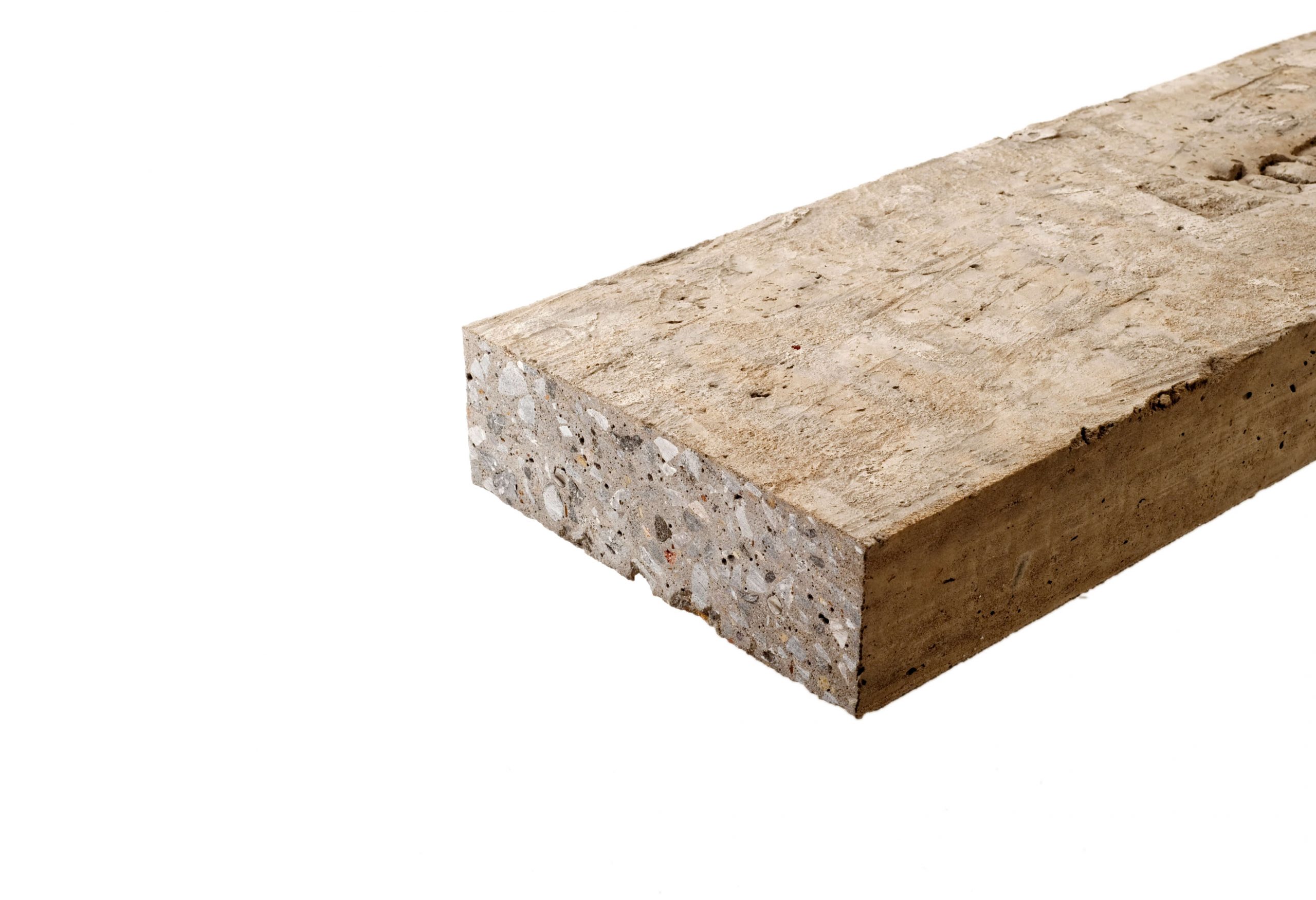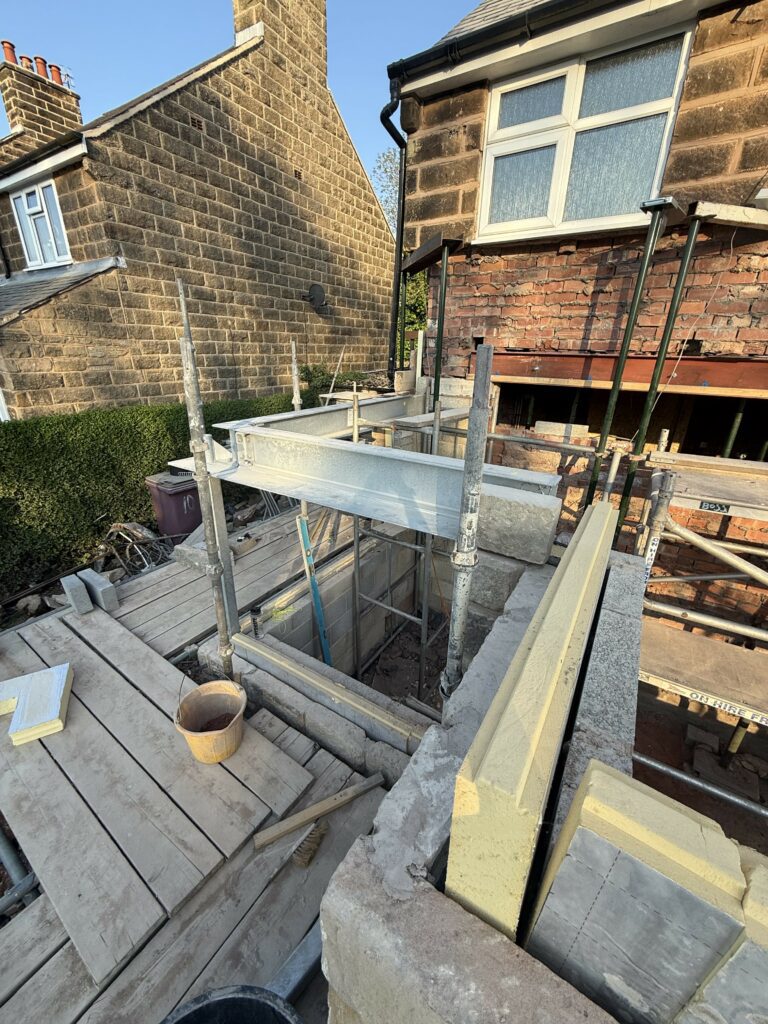
What is a lintel and why do I need one?
Concrete lintels are a common type of lintel due to their low cost and long-term resistance to fire and corrosion.
Every house has a number of openings for doors and windows. Most of these are in structural load-bearing walls. These walls are critical to the building structure as they carry the load of the floor above them and the roof.
To support this weight, you need a solid lintel to span the gap and transfer the weight onto the surrounding walls. Each lintel must be carefully positioned and installed according to specific U.K. building regulations. By following these, you know that your lintel is capable of supporting the load above it.
Concrete lintels are a common type of lintel due to their low cost and long-term resistance to fire and corrosion. They also offer superior thermal insulation and can prevent cold bridging problems that occur with steel lintels.
If you’re interested in learning about concrete lintels and the best way to install them, you’re in the right place. In this guide, we’ll explain what the advantages of concrete lintels are and how to ensure they’re professionally installed.
How Lintels Work in Your Home
Whenever you have an opening in a wall the weight of the structure above it needs to be supported. A concrete lintel beam distributes this load onto the surrounding masonry. Without a lintel, all of the building’s weight would rest on top of the window or door frame.
These wooden and aluminium frames are not designed to withstand heavy loads. In comparison, precast concrete lintels are specifically designed and built to resist large downward forces. They distribute this pressure onto the adjacent walls which are then supported by the building floor slab and foundations.
Concrete lintels are usually constructed with steel bars embedded in the concrete. These reinforce the concrete and provide the structural integrity to resist large compressive loads. The steel also gives the lintel a small amount of flexibility to bend without breaking.
Why You Might Need a Lintel
If you’re planning some DIY home renovations that involve new windows or doors, it’s vital to find out which walls are load-bearing. Breaking open non-load bearing walls is possible for a home builder enthusiast that has some building experience.
It is not advisable to attempt to make changes to a load-bearing wall without the help of a professional builder. Structural alterations can be extremely dangerous and need to be approved by an engineer before you can make any new window or door openings.
Stressline Performance for Concrete Lintels
UKLintels are major stockists and suppliers of Stressline concrete lintels which are designed with concrete strength 50N/mm2 and offer a minimum of ½ hour fire resistance.
Apart from 140×65 and 215×65 lintel sections all other STANDARD lintels are reversible, which means that they can be used either way around to suit the wall construction. Always check loadings against our load span tables.
Hi-Strength lintels are marked ‘TOP’ and the surface must be kept at uppermost all times.
Steps to Install Concrete Lintels
Concrete lintel installation is a fairly easy process if you are building your home from the ground up rather than renovating existing walls. In this guide, we’ll discuss how to install a lintel in a new wall. Let’s break down each step in more detail.
1. Calculate Load-Bearing Weight
When buying concrete lintels online, it’s important to check the load distribution tables associated with the lintel and to seek advice from a structural engineer as to what section of concrete lintel is required.
These will give you the uniformly distributed load (UDL) that the lintel can support in kiloNewtons per meter (kN/m). They will also provide you with the resistance movement (RM) for each lintel.
2. Tools Needed
As most lintels are installed above head height, it’s important to have some sturdy scaffolding that can support your concrete lintel weight. You will also need a selection of standard masonry tools.
These should include:
- Masonry hammer
- Masonry chisel
- Mortar trowel
- Masonry square
- Spirit level
- Masons line
- Tape measure
- Brush
- Shovel/cement mixer
- Mortar bucket
3. Bed on Mortar
On each side of the lintel, you need to have enough space to adequately support the lintel. This is known as the minimum end bearing and should be at least 150mm. For lintels shorter than 1m, you can reduce this to 100mm. With lintels longer than 3m, you should extend it to 200mm.
Lintels should always be supported by full bricks or padstones to provide a solid base. Never use a cut brick and mortar as the base of the lintel as this will not distribute the weight evenly.
Once you’ve mixed up a nice firm consistency mortar you can apply it to the support on either side. Aim to distribute the mortar evenly on both sides. You can then place the lintel in position and bed it down into the mortar to ensure a thorough connection.
When installing a long lintel over 1.2m, it’s advisable to prop the lintel up at the centre point. You should leave this support in place until the mortar has set.
4. Ensure Its Level
As soon as the lintel is in position, it’s vital you use a spirit level to make sure it’s completely flat. It’s very important to spread the load evenly onto both sides of the support. You can use a straight edge laid along the top of the lintel to get a more accurate reading on your level.
It’s also important to check the level across the width of the lintel. This will provide you with a flat surface to place the next row of bricks on. Failing to check this can result in the rest of your wall having an undesirable angle.
Most walls require two lintels side by side to match the width of the wall. By making sure that these are exactly level you can distribute the load evenly across both lintels. If one is slightly higher than the other, you risk putting excess stress on the higher lintel.
Make sure the masonry must not overhang the lintel by more than 25mm.
5. Wait for the Mortar to Cure
Before you put any load on your new lintel, it’s important to allow the mortar enough time to dry. Depending on the environmental conditions, you should wait at least 24 to 36 hours. This is extremely important to keep the lintel completely level.
Once the mortar has cured you can then continue to build your walls. In some situations, it may be necessary to install a damp-proof course above your lintel. When that is in position, you can start laying bricks on the lintel. All external wall lintels MUST be installed with a DPC.
Always position your bricks in a way that evenly distributes the weight across the lintel. Avoid applying too much weight to either side as this can cause structural problems within the lintel. Avoid shock loading of lintels during the installation of concrete floor units and any sideways loading while being fitted into position. Precast flooring units should be laid on a mortar bed across the whole wall width and should not be dragged over supports.
6. Inspect the lintel prior to installation
Before you install the lintel, the lintel should be explained to check for any defects or signs of damage. You should also check it is the correct section as per your engineers calculations.
Advantages of Concrete Lintels
Precast concrete lintels have a number of benefits when compared to steel lintels. The most significant of these is the price difference. Concrete lintels are a considerably more cost-effective option than any other type of lintel.
If you live near the coast, then you’re all too familiar with the corrosive effects of salt-laden air. The steel reinforcement in concrete lintels is encased in concrete and this means they are less susceptible to corrosion.
Another benefit of concrete lintels is that they are more resistant to high temperatures resulting from fires. When steel is heated, it loses its structural integrity and can fail. Concrete lintels will last longer in the event of a house fire and will help prevent further damage.
Are You Looking for Concrete Lintels?
Concrete lintels are the most economical way to support your doorway and window openings. They are easy for hobbyist builders to install and don’t require specialist knowledge or equipment.
If you’re looking for any type of lintel, then make sure you check out UK Lintels. We have over 35 years of experience providing a wide variety of lintels and are a fully CE accredited company for fabricated steelwork.
We only sell lintels that we already have in stock, so there’s no delay when ordering lintels from us. Our team provides next-day delivery across mainland England, Wales and Scotland. You can contact us online or call us at 033 3016 9789 to discuss your requirements.





